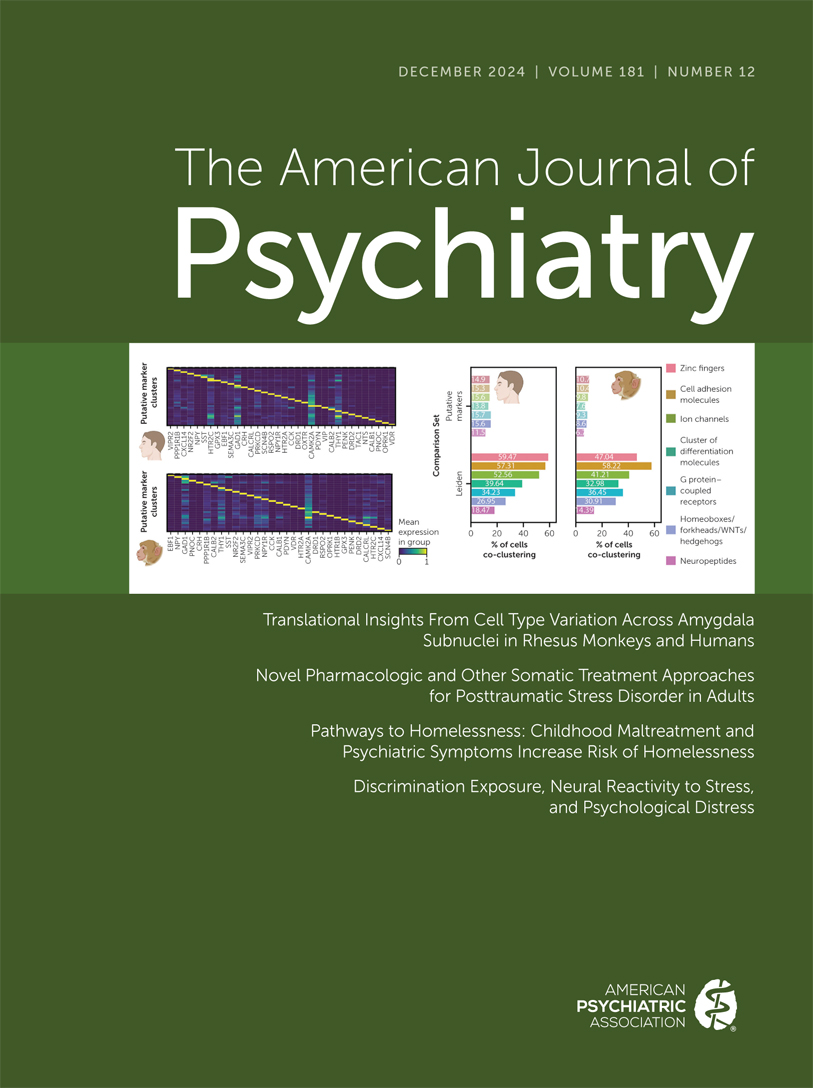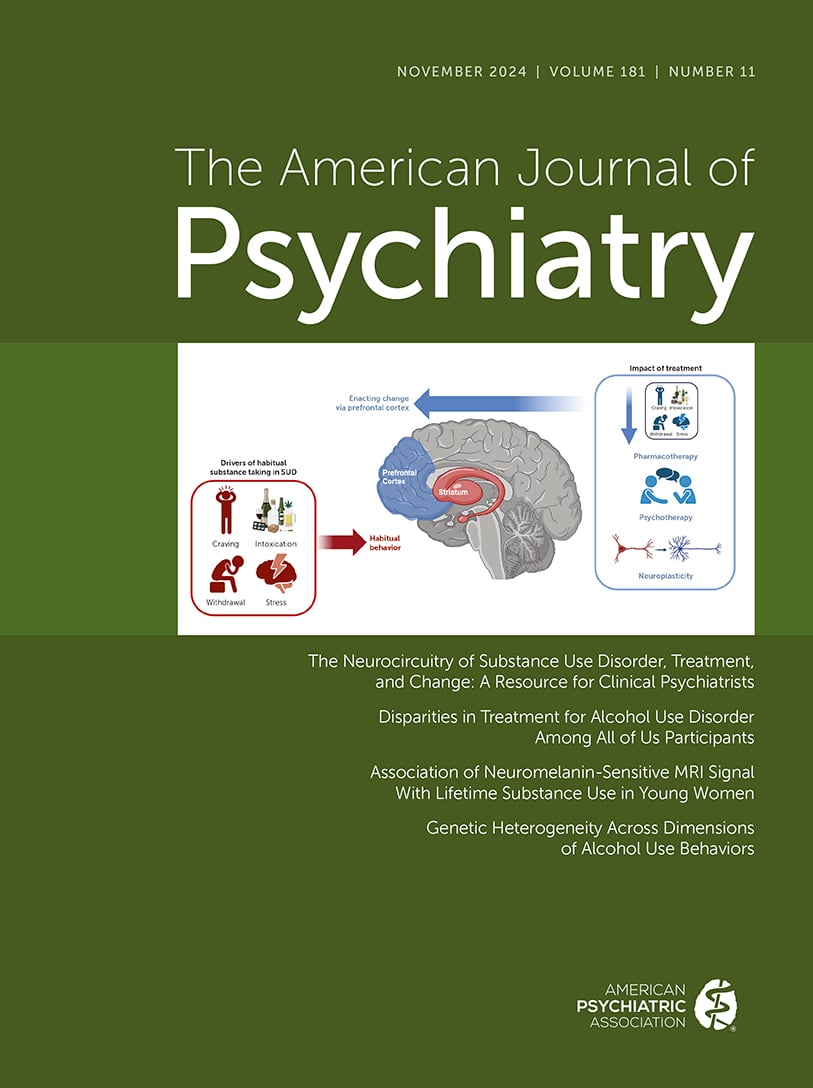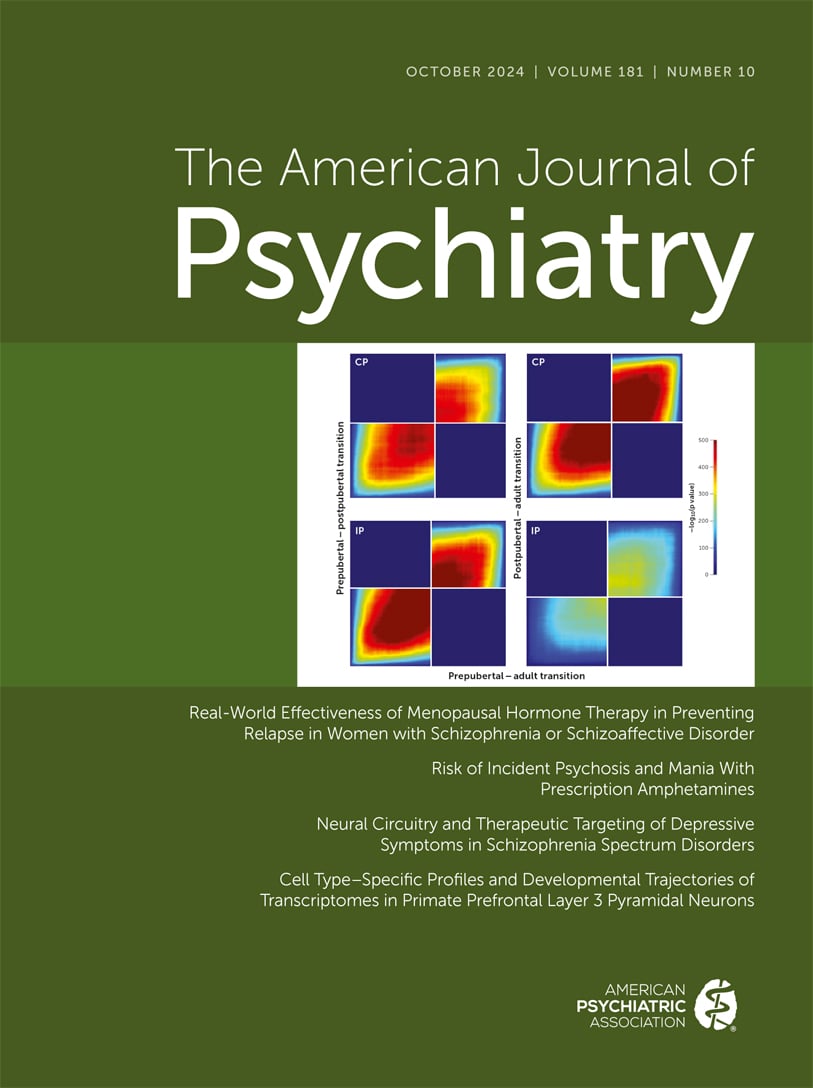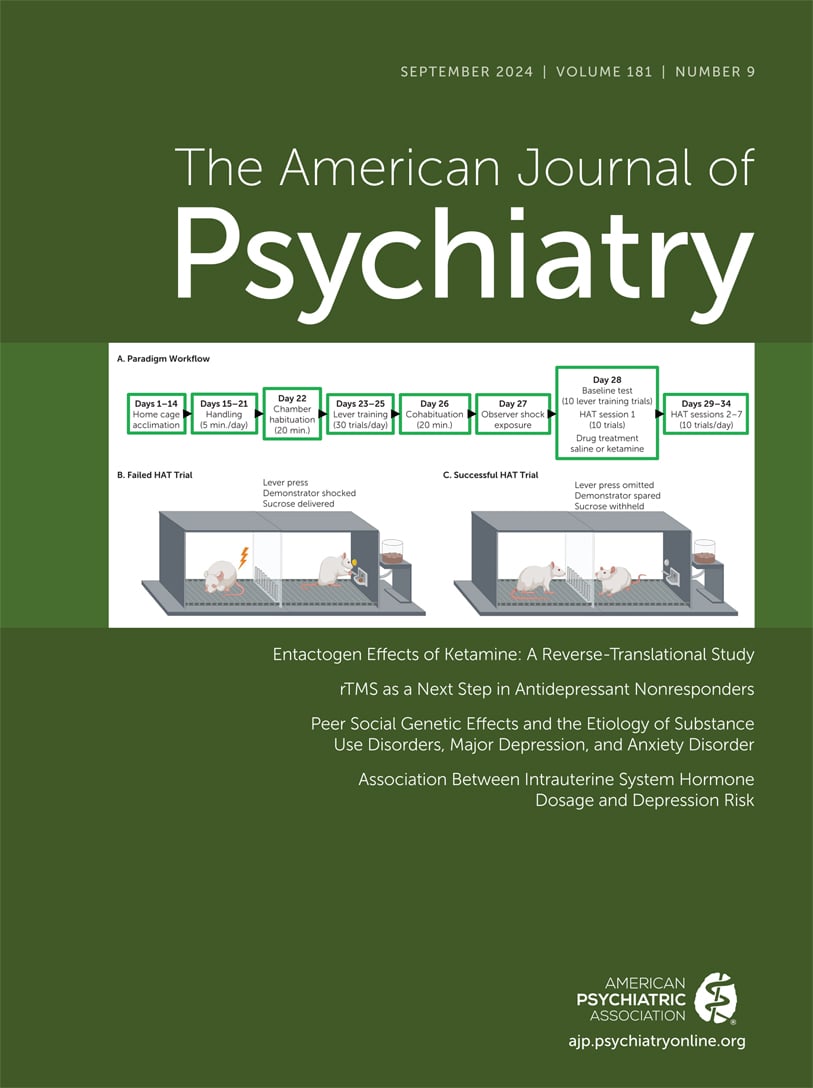American Journal of Psychiatry
- Volume 147
- Number 1
- January 1990
Article
Publication date: 01 January 1990
Pages7–13There is uncertainty about the future role of psychodynamic psychotherapy in psychiatric practice and education. The Association for Academic Psychiatry and the American Association of Directors of Psychiatry Residency Training formed a joint task force ...
https://doi.org/10.1176/ajp.147.1.7Publication date: 01 January 1990
Pages14–21Sixty-one papers involving over 1,700 subjects have documented that over half of depressed patients experience an antidepressant response to sleep deprivation. Eighty-three percent of unmedicated depressed patients who had an antidepressant response to ...
https://doi.org/10.1176/ajp.147.1.14Publication date: 01 January 1990
Pages22–30This paper discusses the definition of apathy, reviews its differential diagnosis, and proposes a classification for the conditions that may produce it. Apathy is defined as diminished motivation not attributable to diminished level of consciousness, ...
https://doi.org/10.1176/ajp.147.1.22Publication date: 01 January 1990
Pages31–37In order to determine important predictors of psychosocial and physical vitality in late midlife, the authors examined the lives of 173 men prospectively studied from ages 18 to 65. Biopsychosocial predictors-- gathered before age 50--were examined for ...
https://doi.org/10.1176/ajp.147.1.31Publication date: 01 January 1990
Pages38–43The authors conducted a retrospective study of the initial impact (1986- 1987) of the Rivers v. Katz decision involving patients' right to refuse treatment at New York State's largest forensic psychiatric hospital. Of 18 petitions submitted, 15 cases were ...
https://doi.org/10.1176/ajp.147.1.38Publication date: 01 January 1990
Pages44–50Striatal D2 dopaminergic receptors of 12 drug-free schizophrenic patients and 12 normal subjects were investigated with positron emission tomography and [76Br]bromospiperone. Patients were classified according to DSM-III criteria, and their clinical ...
https://doi.org/10.1176/ajp.147.1.44Publication date: 01 January 1990
Pages51–56The authors evaluated a six-session interactive computer cognitive- behavioral treatment program given to volunteer patients who met Research Diagnostic Criteria (RDC) for major or minor depressive disorder. Patients were randomly assigned to computer-...
https://doi.org/10.1176/ajp.147.1.51Publication date: 01 January 1990
Pages57–63Of 50 patients with borderline personality disorder, 100% reported disturbed but nonpsychotic thought, 40% (N = 20) reported quasi- psychotic thought, and none reported true psychotic thought during the past 2 years; only 14% (N = 7) reported ever ...
https://doi.org/10.1176/ajp.147.1.57Publication date: 01 January 1990
Pages64–68The authors studied 100 impaired physicians who were successfully treated in a program that combined professionally directed psychotherapeutic treatment and peer-led self-help. An average of 33.4 months after admission they all reported being abstinent ...
https://doi.org/10.1176/ajp.147.1.64Publication date: 01 January 1990
Pages69–75Data on the hypnotizability of 113 psychiatric inpatients and 58 normal control subjects were compared. The patients' mean score on the Hypnotic Induction Profile was significantly lower than that of the control subjects, but on the Stanford Hypnotic ...
https://doi.org/10.1176/ajp.147.1.69Publication date: 01 January 1990
Pages76–82The authors describe the Structured Clinical Interview for DSM-III-R Dissociative Disorders (SCID-D), which investigates five groups of dissociative symptoms (amnesia, depersonalization, derealization, identity confusion, and identity alteration) and ...
https://doi.org/10.1176/ajp.147.1.76Publication date: 01 January 1990
Pages83–88The authors evaluated changes in symptoms and levels of perceived distress of 21 Cambodian, 13 Hmong/Laotian, and 18 Vietnamese patients before and after a 6-month treatment period. Most of the patients improved significantly. Cambodians had the greatest ...
https://doi.org/10.1176/ajp.147.1.83Publication date: 01 January 1990
Pages89–93To identify the diagnostic characteristics and counseling needs of individuals at risk for acquired immune deficiency syndrome (AIDS), standardized DSM-III-R diagnoses were given to 207 physically asymptomatic adults when they sought serological testing ...
https://doi.org/10.1176/ajp.147.1.89Publication date: 01 January 1990
Pages94–99The authors assessed the mood and cognitive effects of sequential T4, T3, and withdrawal of thyroid hormone replacement on 25 patients who had had thyroidectomies for thyroid cancer. The patients experienced increased sadness and anxiety when they were ...
https://doi.org/10.1176/ajp.147.1.94Publication date: 01 January 1990
Pages100–105Medicare's reimbursement policy provides payment incentives for hospitals to transfer psychiatric patients to another acute-care facility, especially when the destination facility is exempt from Medicare's prospective payment system. The authors found, ...
https://doi.org/10.1176/ajp.147.1.100Publication date: 01 January 1990
Pages106–109Primary alcoholic patients with secondary depression had significantly shorter REM latency and less non-REM sleep than alcoholics without other psychiatric diagnoses and normal control subjects. Both patient groups had significantly longer sleep latency ...
https://doi.org/10.1176/ajp.147.1.106Publication date: 01 January 1990
Pages109–111Four men with paruresis received trials of atenolol or phenelzine or both. Atenolol was effective in one patient. Three patients had a poor response to phenelzine, and they all experienced troublesome side effects.
https://doi.org/10.1176/ajp.147.1.109Publication date: 01 January 1990
Pages112–113Of 52 psychiatric inpatients, 81% believed that factors such as proper diet, sleep, and exercise affect the development of illnesses, and 23% believed that sin-related factors, such as sinful thoughts or acts, have such an effect.
https://doi.org/10.1176/ajp.147.1.112Article
Article
Article
Article
Article
Article
Past Issues
View Issues Archive
Vol. 181 | No. 12

Vol. 181 | No. 11

Vol. 181 | No. 10
